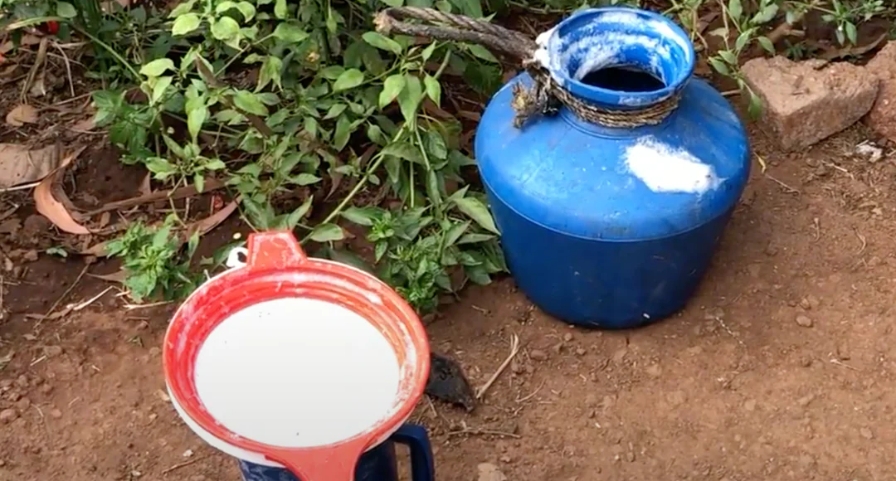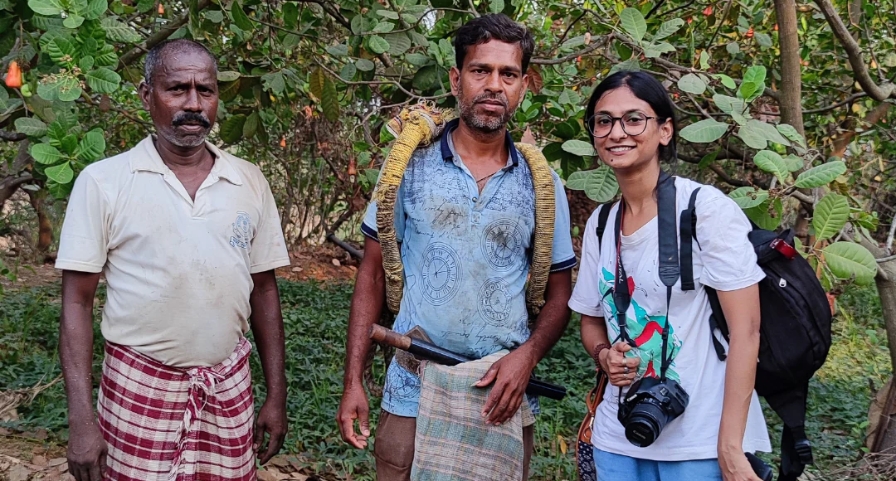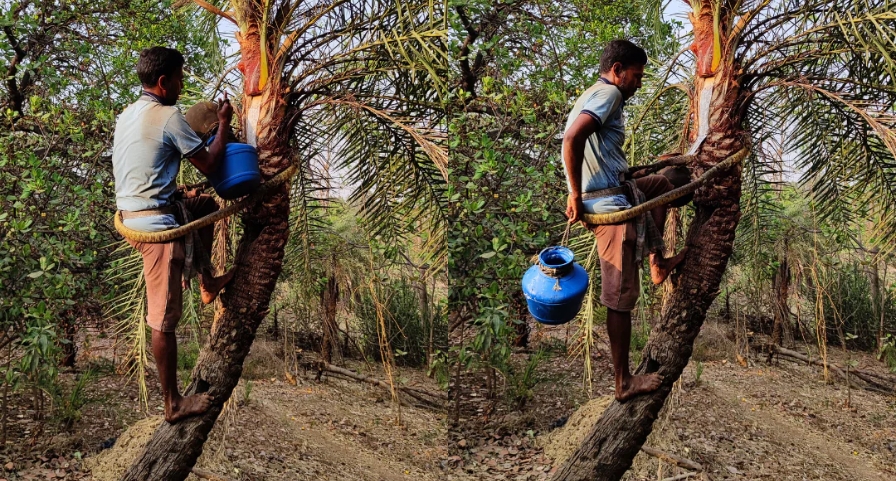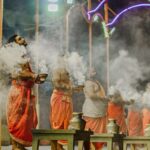With the popularity of Warli art reaching international waters, art lovers, critics and scholars alike are taking an interest in the iconography used in these illustrations.
Research and visual analysis both point to the same conclusion – the muse of Warli art is none other than nature itself. And, surprisingly, a special palm spirit plays a very active role in weaving the cultural fabric of the tribe.

One might wonder – what is a spirit? Well, in this instance, we are not referring to incorporeal deities, but to alcohol – although the former definition also has a part to play, as we shall see.
For many years, the tribe has engaged in brewing their own liquor, daru and tadi being the chief spirits of choice. While daru is a distilled alcoholic beverage, tadi – cultivated from the verdant groves of palm trees – is only lightly fermented.
In districts populated by the Warli community, it is not uncommon to witness tadi-tappers on their way to collect the sap from palm trees. In the mornings and afternoons the athletic tadi-tapper, armed with tools of the trade, climbs 30 to 50-foot-high trees to fill earthen pots attached to palm flowers yet to blossom.
The sap initially collected is sweet, nutritious, and is not alcoholic until strained through a mesh cloth. The process of fermentation is somewhat completed at the two-hour mark, but the wine yielded can be made stronger by leaving it to effervesce for a longer time.
Once the brewing is complete, the tadi or toddy is used for both domestic and ritualistic purposes. The palm wine is an integral part of Warli spirituality, as it is employed as an offering to deities at each event of the tripartite cycle of birth, marriage and death.
The significance of alcohol as a cultural token in the Warli imagination is vastly different from its bacchanalian connotations in urban societal culture. Therefore, the motifs present in Warli art documenting the daily life of the tribe include harvest celebrations, tarpa dances and pujas – all events where tadi is served, and natural elements are worshipped.

As animists, the tribe worships spirits and deities like Lord Hirva (the word for green in the Marathi language), who is the spiritual embodiment of nature.
They share a relationship with the forest ecosystem which is deeply rooted not only in ancestral and mythological functions but also in practical survivalist gumption.
The woods protect the tribe, offering shelter, medicine, food, as well as drink. And for this reason, the liquor too is a gift of the gods and is held sacred. Mythopoeia is after all a primaeval custom created to protect that which is sacrosanct. It is a love letter from human beings to the natural world – a pledge to treasure and preserve.
Also read: Unveiling ‘landa’, Odisha’s tribal spirit, once forbidden by the British
This story first appeared on MeMeraki.
MeMeraki is India’s first ‘culture-tech’ platform using technology to empower and accelerate the artisan creator economy. Their mission is to digitise every heritage art and craft of India to ultimately create sustainable livelihoods for artisans.
The lead image on top depicts tadi-tappers clambering onto palm trees to collect sap from palm flowers. (Photo courtesy MeMeraki)








